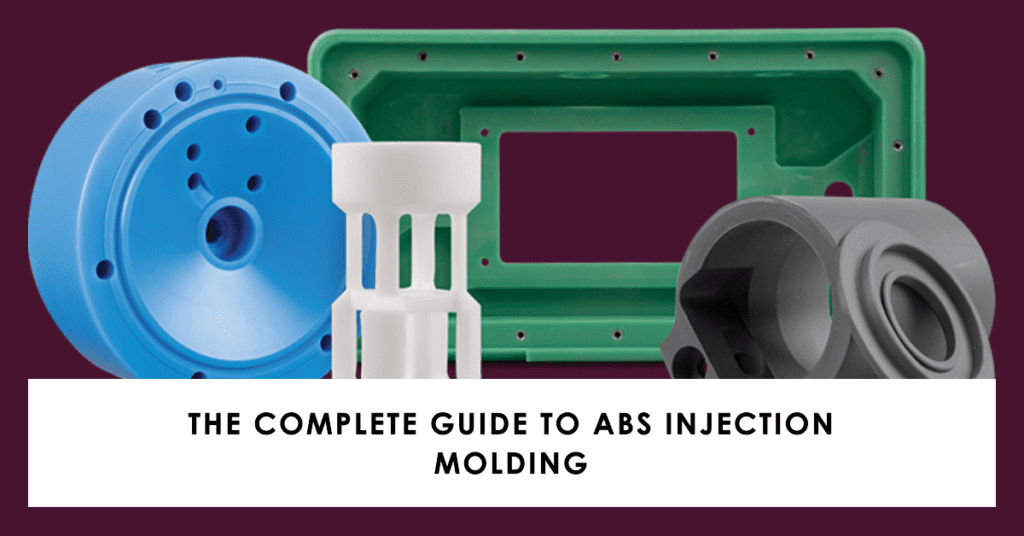
ABS injection molding is a transformative process that has a significant role in plastic component production across industries. It combines strength, resilience, and a high ability to withstand temperature variations, making it an industry favorite. Whether it’s the child’s toy that withstands countless hours of play or the robust components in machines and vehicles, ABS injection molding can fulfill the requirements.
This article will discuss the intricacies of ABS injection molding, including essential techniques, design guidelines, cost considerations, advantages, applications, and more.
What is ABS Injection Molding?
ABS injection molding shapes raw ABS Materials into functional parts and products. It is a specialized process used to manufacture various plastic products with exceptional durability, resistance, and high-quality finishes. This method employs ABS (Acrylonitrile Butadiene Styrene), a thermoplastic polymer with a perfect blend of ABS plastic properties suitable for diverse applications.
- Versatility in Applications: ABS’s unique properties make it suitable for different uses, from automotive parts to consumer electronics.
- High Impact Resistance: Products made from ABS are known for their toughness and ability to withstand heavy use.
- Excellent Aesthetic Qualities: ABS can be finished with a high-quality surface look, which is aesthetically pleasing and often eliminates the need for painting.
- Customizable Properties: By blending ABS with other materials or additives, it can be customized for enhanced UV resistance, improved flame retardancy, or increased strength.
- Good Dimensional Stability: ABS parts are less likely to suffer deformation under stress due to their rigidity and structural integrity.
- Ease of Machining and Finishing: Post-processing of ABS products is straightforward, allowing for easy machining, gluing, and painting.
However, to truly appreciate the process, we first need to delve into ABS’s properties and why it’s such a sought-after material in the industry.
ABS: A Material Par Excellence
ABS is a copolymer, which means it’s a product of three different materials: Acrylonitrile, Butadiene, and Styrene. Each of these contributes distinct properties:
- Acrylonitrile: Provides chemical resistance and hardness.
- Butadiene: Adds toughness and strength, especially at low temperatures.
- Styrene: Gives the plastic a smooth finish and makes it easy to manufacture.
These three different material combinations make ABS unique and the different properties of ABS properties make it a popular choice for numerous applications, from automotive components to consumer electronics.
Table: Key Properties of ABS
| Property | Value |
|---|---|
| Density | 1.04 g/cm^3 |
| Melting Point | 200°C – 240°C |
| Tensile Strength | 40 MPa |
| Flexural Modulus | 2.2 GPa |
Read more: ABS Plastics: Strength, Versatility, and Manufacturing Insights
Why is ABS Used in Injection Molding?
ABS plastic’s popularity in injection molding is primarily due to its impressive balance of mechanical properties. It’s challenging yet flexible, can withstand heavy use, and is highly resistant to physical impacts and chemical corrosion, making it an ideal choice for various applications.
The material also excels in aesthetics and ease of manufacturing. ABS can be molded with fine detail and offers a naturally glossy finish, allowing for visually appealing products without post-processing. Its ability to be colored easily adds to its design versatility.
Furthermore, ABS is cost-effective and can be recycled, which appeals to environmentally conscious manufacturing processes. Its thermal stability and ability to bond with other materials through over-molding or insert molding expand its utility in complex manufacturing projects.
The Process of ABS Injection Molding

Schematic diagram of ABS injection molding
ABS injection molding is a method for transforming granulated ABS into a wide range of products. Although it might seem straightforward, the process involves precise steps and considerations.
The Science Behind the Process
Temperature control is crucial in ABS injection molding. ABS has a specific melting point, usually between 200°C and 240°C. Ensuring the temperature stays within this range guarantees the optimal flow and molding of the material.
Additionally, pressure plays a pivotal role. Insufficient pressure might leave voids in the molded product, whereas excessive pressure could damage the mold. It’s a delicate balance, reliant on the design of the product and the specifications of the ABS being used.
The Role of Molds
The mold used in the injection molding isn’t just a shell; it’s a precision-engineered tool. Designed often using CAD software, it ensures the final product’s accuracy. Depending on the complexity, a single mold can cost anywhere from a few thousand to tens of thousands of dollars.
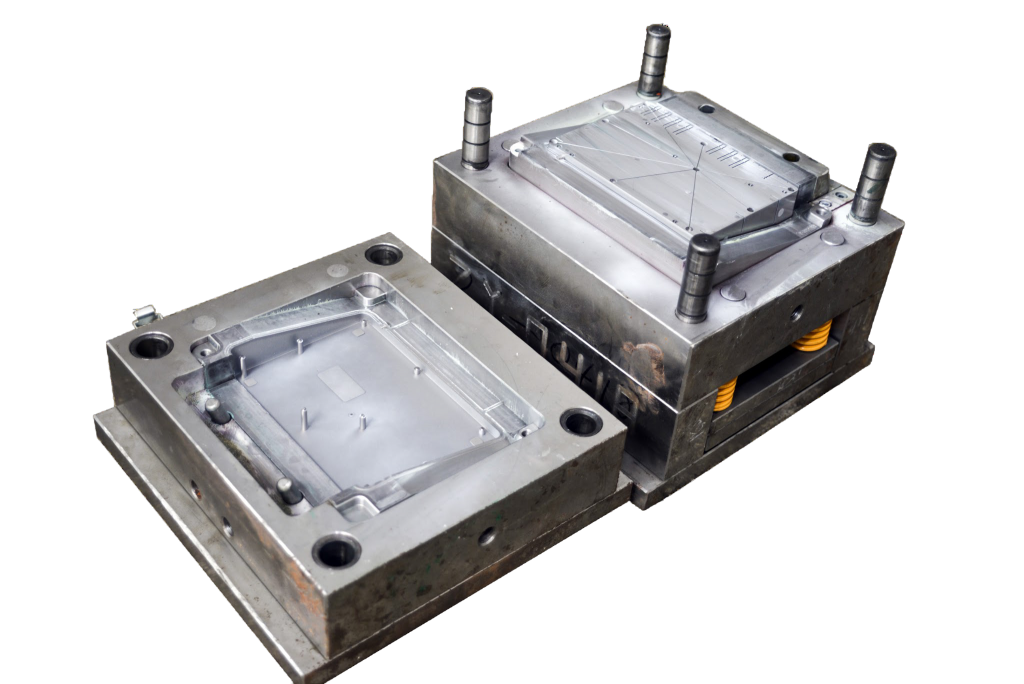
Plastic injection mold
The Molding Operations
In ABS injection molding, the process begins with drying ABS granules to eliminate moisture, which can affect molding. Next, these granules are melted in an injection molding machine, turning them into a viscous liquid. Then, the liquid ABS is injected into a mold under high pressure, ensuring detailed shaping. As the ABS cools inside the mold, it solidifies into the final shape. The process concludes with the ejection of the cooled, molded product, often assisted by pins. Later in this article, we will elaborate on the Step-by-step process of ABS injection molding.
The ABS Injection Molding Process Step-by-Step
ABS (Acrylonitrile Butadiene Styrene) is a widely used thermoplastic in injection molding, primarily due to its easy moldability, strength, and resilience. Let’s embark on a step-by-step journey through a detailed table to elucidate this intricate procedure.
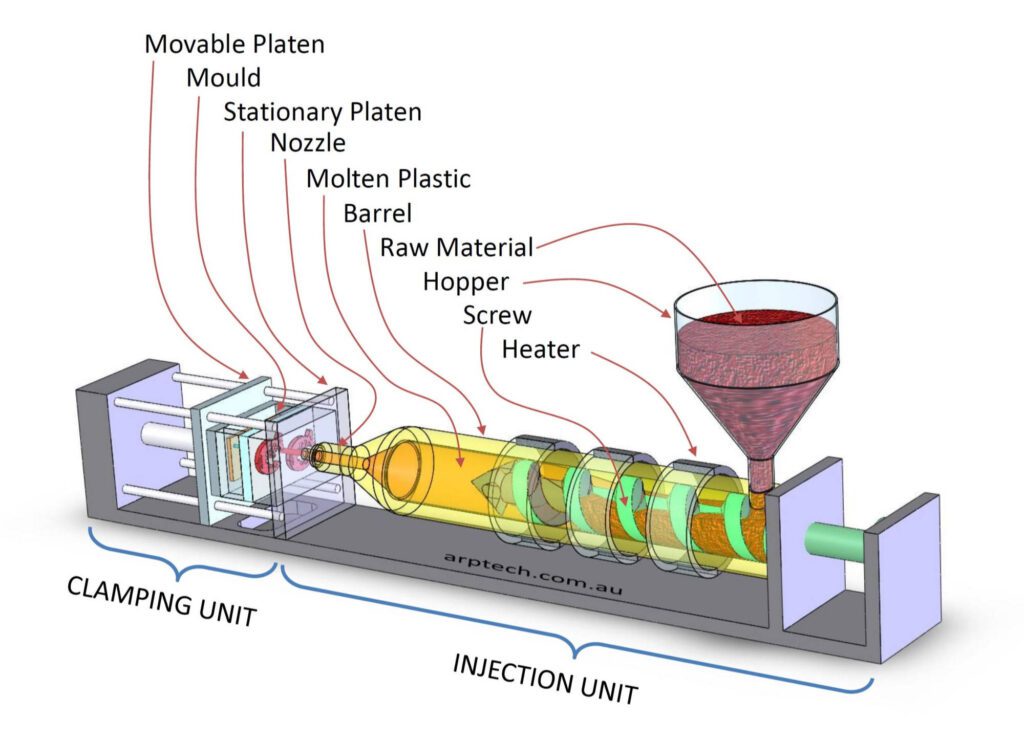
Injection molding process
The table below illustrates a structured overview of the ABS Injection Molding Process from material preparation to recycling and waste management.
Table: Comprehensive Overview of the ABS Injection Molding Process
| Step | Action | Description | Additional Information |
|---|---|---|---|
| Material Preparation | Drying | ABS pellets are dried to reduce moisture. | Typically at 80-90°C for 2-4 hours |
| Coloring | Addition of colorants or masterbatches to ABS pellets. | Specific proportions as needed | |
| Feeding the Machine | Loading | Dried ABS pellets are loaded into the machine’s hopper. | A little moisture can affect the molding process. |
| Gravity Assistance | Gravity funnels pellets into the heated barrel. | A gateway to convert the ABS phase from solid to liquid | |
| Melting the ABS | Heating | ABS pellets are melted in the barrel. | Via heaters that progressively raise the temperature |
| Homogenizing | Ensuring consistency of the molten ABS. | In terms of temperature and viscosity | |
| Injecting the Mold | Closing | The mold is securely closed. | Typically made of steel or aluminum |
| Injecting | Molten ABS is injected into mold cavities. | Using hydraulic or mechanical pressure | |
| Holding and Cooling | ABS solidifies inside the mold. | Accelerated by the mold’s water-cooling system | |
| Key Parameters | Injection Pressure | Pressure when injecting ABS. | 50-100 MPa |
| Injection Speed | Rate of material injection. | 50-100 mm/s | |
| Mold Temperature | The temperature inside the mold. | 20-70°C | |
| Ejecting the Component | Mold Opening | The mold’s two halves are opened. | Post adequate solidification of the part |
| Ejection | The molded ABS part is ejected. | Via ejector pins built into the mold | |
| Quality Check and Post-Processing | Inspection | Molded parts are checked for defects. | E.g., warping, sink marks, cosmetic flaws |
| Trimming and Cleaning | Removal of excess material and cleaning. | Flash and residue, respectively | |
| Secondary Operations | Additional operations on some parts. | E.g., painting, assembling, machining | |
| Recycling and Waste Management | Regrinding | Waste ABS or rejected parts are reused. | Ground down for reuse |
| Mixing with Virgin Material | Reground ABS mixed with fresh ABS pellets. | For certain non-critical applications |
What Are the Different ABS Injection Molding Techniques?
ABS injection molding is a predominant method in the plastics industry, but not a one-size-fits-all technique. Specialized molding techniques such as over-molding, insert molding, and gas-assisted injection molding have been developed to expand the capabilities of ABS plastic.
Plastic Overmolding
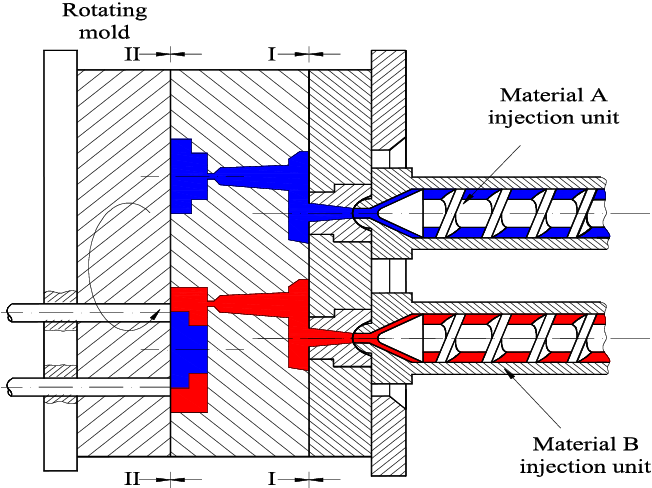
The Injection over-molding process. Source
Plastic overmolding is a multi-step injection molding process that combines the toughness of ABS with the flexibility of other materials to create composite parts with superior properties.
- Multi-material Components: Overmolding allows for combining ABS with compatible materials to add features like soft grips or provide color contrasts.
- Improved Product Functionality: Manufacturers can enhance impact resistance and waterproofing capabilities with over-molding materials such as TPE or TPU onto ABS parts.
- Enhanced Durability: The overmolding process can create a strong mechanical bond between the substrate and the overmold material, improving the durability of the final product.
- Design Flexibility: This technique opens up new design possibilities, allowing for creating complex shapes and textures that are impossible with ABS alone.
Insert Molding
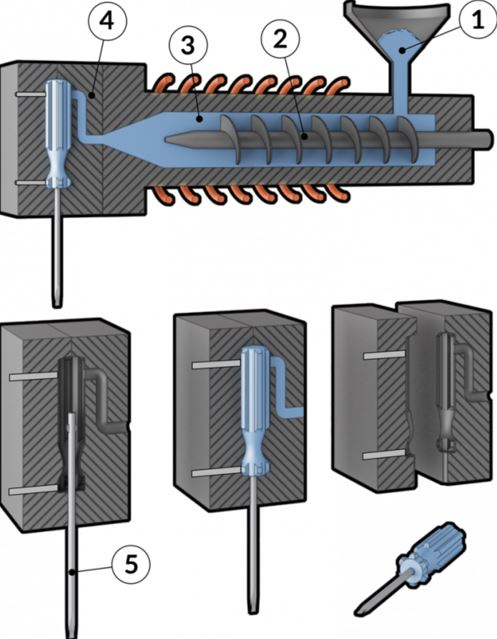
The insert-injection molding process
Insert molding integrates metal components with ABS plastic, yielding parts that leverage the metal’s strength and the ABS’s versatility.
- Incorporation of Metal Parts: Insert molding is perfect for embedding metal parts into plastic for enhanced structural integrity or functional features like threaded inserts.
- Reduction of Assembly Steps: This process can significantly reduce post-molding assembly time and costs by molding metal components directly into the plastic.
- Increased Part Strength: The mechanical bond formed during insert molding often results in a more vital part than assembling metal and plastic components post-molding.
- Precision and Reliability: The insert molding process allows for precise positioning of the metal inserts and ensures they remain securely encased within the ABS material.
Gas-assisted Injection Molding
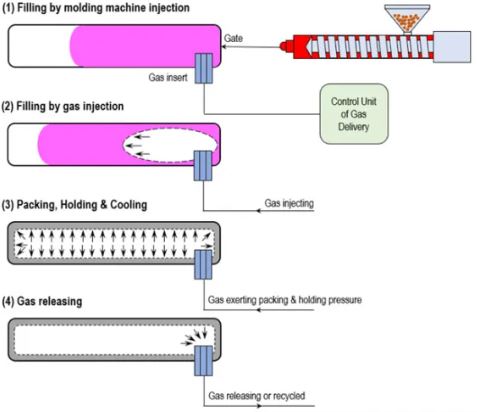
Principle of Gas-assisted injection molding
Gas-assisted injection molding is an innovative technique involving high-pressure gas to create hollow sections within ABS parts, leading to numerous benefits in molding.
- Weight Reduction: Introducing gas channels into the parts can significantly reduce the overall weight without compromising structural integrity.
- Minimized Warping: The even pressure exerted by the gas during molding helps to maintain the shape and reduces the chances of warping as the part cools.
- Improved Surface Finish: Gas-assisted molding can enhance the surface quality of parts by reducing sink marks and other surface blemishes.
- Material and Cost Efficiency: This method can lead to cost savings for high-volume production runs by using less material to create hollow parts and reducing cycle times
ABS Injection Molding Design Guidelines
Designing for ABS injection molding requires understanding the material properties and the molding process to ensure high-quality production. It encompasses various influencing factors, such as manufacturability, functionality, and aesthetics. Adhering to these principles is crucial for optimizing molding, minimizing defects, and controlling costs.
The Common Design Parameters in ABS Injection Molding
The foundation of effective ABS injection molding design lies in balancing material characteristics with the desired part performance. Designers must consider the end-use application to determine the appropriate thickness, texture, and overall geometry.
Moreover, the design must facilitate the molding process itself to ensure that the molten ABS flows correctly and fills the mold uniformly. Thoughtful design minimizes the risks of warping, sink marks, and other common defects.
The following are the key design parameters in ABS Injection Molding.
1. Wall Thickness
Wall thickness is a pivotal factor in ABS injection molding design. Uniform wall thickness promotes even cooling and reduces the likelihood of defects like warping or sink marks. It’s generally recommended to keep walls as thin as possible (1.14 to 3.56 mm) to minimize cycle time and material use, but not so thin that it compromises the part’s structural integrity or functionality.
2. Draft Angles
Draft angles facilitate the removal of the part from the mold. For ABS parts, a minimum draft angle of 0.5 degrees for smooth surfaces is often recommended. However, for surfaces with a texture or for deeper cavities, it is advisable to use a larger draft angle, typically around 1 to 2 degrees, to accommodate for the increased friction and ensure the integrity of the part during ejection.
3. Radii
Integrating radii into the design helps eliminate sharp corners and reduce stress concentrations, which can cause cracks and part failure. For ABS injection molding, it’s recommended to use a minimum radius of 0.5mm. This not only strengthens the part but also aids in the material flow during the injection process, ensuring a more uniform and defect-free production.
4. Rib Design
Ribs provide structural support to injection molded parts without the need for thick walls. For ABS, the thickness of ribs should typically not exceed 60% of the adjoining wall thickness to prevent issues with sink marks. The ideal rib height for ABS parts is recommended to be up to three times the nominal wall thickness to ensure adequate support without compromising the cooling time and structural integrity.
5. Boss Design
Bosses are used as mounting points and standoffs and must be designed to withstand the stresses of assembly and use. For ABS parts, bosses should have a diameter that is approximately twice the diameter of the screw or insert intended for use. Additionally, they should include a draft angle of at least 0.5 degrees and be supported by ribs where possible to enhance their strength and prevent deformation.
6. Part Tolerances
Part-tolerances are vital for the proper fit and function of the injection molded component, especially when the part must mate with other components. For ABS, typical dimensional tolerances range from ±0.1mm for smaller features up to ±0.5mm for larger dimensions. These tolerances account for the material’s behavior during the molding and cooling processes, ensuring parts meet the necessary specifications without excessive rework or adjustment.
ABS Injection Molding Considerations
Detailed attention to various parameters is crucial to producing high-quality parts in ABS injection molding. The factors like material viscosity, moisture content, temperature control, and injection speed must be finely tuned to meet the specific needs of each project.
Controlling these aspects of the injection molding process can help avoid common manufacturing issues such as warping, voids, and surface imperfections, ultimately leading to more consistent and reliable parts.
Below is a detailed table of considerations for ABS injection molding, with specific suggestions for each:
Table: Considerations in ABS Injection molding
| Consideration | Description | Suggested Values or Ranges | Additional Notes |
| Viscosity | The flow characteristics of ABS at processing temperatures. | Optimal at 220 – 280°C depending on the grade and additives. | Adjust according to material datasheets. |
| Moisture | ABS’s sensitivity to moisture and the need for pre-drying. | Pre-dry at 80 – 85°C for 2 – 4 hours. | Prevents steam bubbles and surface defects. |
| Temperature Control | The precision of maintaining the mold’s temperature. | Mold temperature: 40 – 80°C, depending on part design. | Affects the surface finish and cycle time. |
| Injection Pressure | The force at which the molten ABS is injected into the mold. | Typically between 500 – 1500 bar. | Too high can cause flash; too low can lead to short shots. |
| Injection Speed | The rate at which the molten material is injected. | Moderate to high speed preferred. | Slow speed can lead to premature cooling and incomplete fill. |
| Shrinkage | ABS’s tendency to shrink as it cools in the mold. | Average shrinkage: 0.4 – 0.7%. | Factor in design to ensure dimensional accuracy. |
| Residence Time | The duration the ABS material stays in the barrel before injection. | Minimize as much as possible to prevent degradation. | Overly long residence times can lead to burnt material. |
| Cleanup | The importance of cleaning the mold and machine. | Regular cleaning per manufacturer’s schedule. | Prevents build-up and potential contamination. |
These parameters are interrelated, and changes in one can affect the others, making it important to approach adjustments holistically. The suggested values provided are general guidelines and should be refined through empirical testing and production feedback to meet the unique requirements of each molding project.
Cost Analysis of ABS Injection Molding
Understanding the cost dynamics of ABS injection molding is essential for businesses to make informed decisions about product design, manufacturing efficiency, and budget allocation. The cost of molding ABS parts is influenced by a multitude of factors, each contributing to the final price of production.
Cost Factors in ABS Injection Molding
Several key factors influence the cost of ABS injection molding. These elements must be carefully considered and optimized to ensure the process is both cost-effective and produces high-quality parts.
- Material Costs: ABS plastic is a common thermoplastic injection molding material due to its strength and durability. The cost can vary based on the grade of material and the quantity purchased. Bulk purchases often reduce the unit price, but the initial outlay may be significant.
- Mold Cost: The mold cost is a significant upfront expense in injection molding. Complex molds with intricate designs or large sizes can be expensive, but these costs are spread over the lifespan of the mold, which can produce millions of parts.
- Production Speed: Faster production speeds mean more parts are produced per hour, which can reduce labor and overhead costs per part. However, optimizing for speed must not compromise the quality of the part.
- Labor Costs: Skilled technicians are required to oversee the injection molding process. While automation has reduced the labor needed, the labor cost can still be substantial, especially in high-wage countries.
A Real-world Example of ABS Injection Molding Cost
To illustrate the cost analysis of ABS injection molding, let’s consider a real-world example of a mid-sized automotive interior component.
Table: Cost Estimation for ABS Injection Molded Automotive Part
| Cost Factor | Description | Estimated Cost |
| Material Costs | High-grade ABS for durability and finish. | $5.00 per kg |
| Mold Cost | Single cavity steel mold with a lifespan of 500,000 parts. | $50,000 |
| Production Speed | 1,000 parts per 24-hour production cycle. | N/A |
| Labor Costs | Skilled technicians operating in two shifts. | $30 per hour |
| Total Cost for 500,000 parts | Combining all costs for a full production run. | $200,000 |
This example simplifies the complexities of a real-world scenario but provides a clear overview of how each cost factor contributes to the overall expense. Furthermore, it is worth noting that the more parts produced, the lower the potential cost per part due to the distribution of the mold cost across a high number of units.
What Are the Advantages of ABS Injection Molding?
ABS stands tall amidst the vast expanse of materials available for injection molding. Its undeniable benefits are combined with the efficiency of the injection molding process and lead to precise manufacturing.
Let’s discuss the salient advantages of ABS injection molding and understand its significance in modern manufacturing.
1. A Pinnacle of Material Properties
ABS, as a material, is endowed with a unique combination of properties that position it as a favorite among manufacturers and engineers. Here are some of its intrinsic benefits:
Table: Values of Various ABS properties
| Property | Value |
|---|---|
| Strength and Durability | ABS is inherently strong and can withstand considerable wear and tear. When molded using the injection molding process, the products exhibit increased resilience, making them suitable for applications that require longevity. |
| Thermal Stability | ABS possesses a high melting point, which ensures that products made from it don’t deform easily under high temperatures. |
| Chemical Resistance | The presence of Acrylonitrile in ABS grants it resistance against various chemicals. This characteristic is particularly beneficial for products that may come in contact with corrosive substances or need to be chemically bonded. |
| Flexibility and Impact Resistance | Thanks to Butadiene, ABS showcases a good degree of flexibility, making it less prone to cracking under pressure or upon impact. |
2. Superior Finish and Aesthetics
When a product not only needs to function well but also look good, ABS injection molding is often the method of choice:. ABS, once molded, provides a smooth surface finish, often negating the need for any post-processing or polishing.
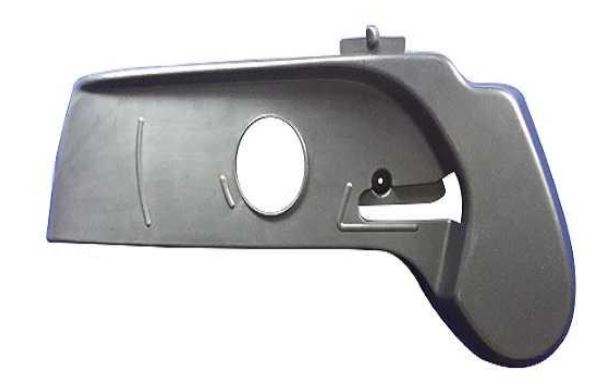
The superior finish of injection molded ABS part
Unlike some materials that require painting or secondary procedures for coloring, ABS can be compounded with colorants before the molding process. This results in uniform color distribution and a high-quality finish.
3. Cost-effectiveness in Production
The financial aspect is a major determinant in any manufacturing decision. Here, ABS injection molding showcases its efficiency:
- Reduced Waste: The injection molding process is precise, resulting in minimal waste of material. Furthermore, any leftover or rejected ABS can be recycled, further enhancing its economic viability.
- Efficient Production Cycles: ABS’s properties, combined with the streamlined process of injection molding, result in quick production cycles. This means that large quantities can be produced in relatively shorter periods, meeting market demands promptly.
4. Versatility in Design and Application
The adaptability of ABS in the molding process is another feather in its cap. The nature of the injection molding process allows for intricate designs and detailed features to be incorporated into the product. Whether it’s a detailed logo or a complex internal structure, ABS injection molding can achieve it with precision.
Furthermore, from automotive components, and consumer electronics, to toys, the applications of ABS injection molded parts are vast and varied.
5. Environmental and Safety Considerations
In today’s world, environmental concerns are paramount, and ABS doesn’t disappoint. ABS injection molding emits fewer volatile organic compounds (VOCs) compared to other processes and materials. Additionally, ABS can be recycled. This characteristic not only aids in reducing waste but also promotes a circular economy.
What Are the Applications of ABS Injection Molding?
Acrylonitrile Butadiene Styrene (ABS) is renowned for its distinctive blend of toughness, rigidity, and aesthetic appeal. Its unique combination of properties has paved the way for ABS to be a preferred material in a multitude of industries, each leveraging the advantages of ABS injection molding to produce a range of products.
Let’s explore the wide-reaching applications of this versatile process.
Automotive and Transportation
The automotive sector has long recognized the potential of ABS injection molding. The material’s inherent toughness, coupled with its ability to resist high temperatures and impacts, make it invaluable for this industry.
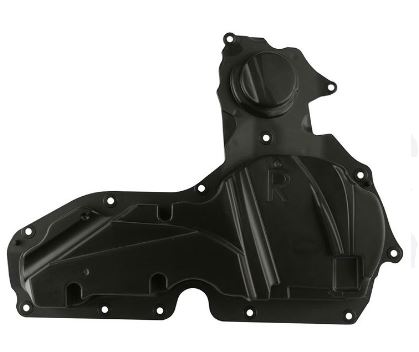
Automotive application of ABS injection molding
ABS is utilized to mold interior parts like dashboards, which require a fine balance between aesthetics and functionality. Also, the high impact resistance of ABS ensures that car bumpers and panels can withstand minor collisions without detrimental damage.
Lastly, the ability to mold ABS with precision means that intricate components, such as light casings, can be produced to fit seamlessly with other car parts.
Medical Equipment and Devices
In the critical domain of healthcare, materials must adhere to strict standards. ABS, being reliable and safe, finds several applications in this sector. Devices such as blood pressure monitors or respiratory equipment benefit from the durability and stabilizability of ABS. Also, it provides a comfortable grip combined with strength, attributes that are crucial for surgical instruments.
Consumer Electronics
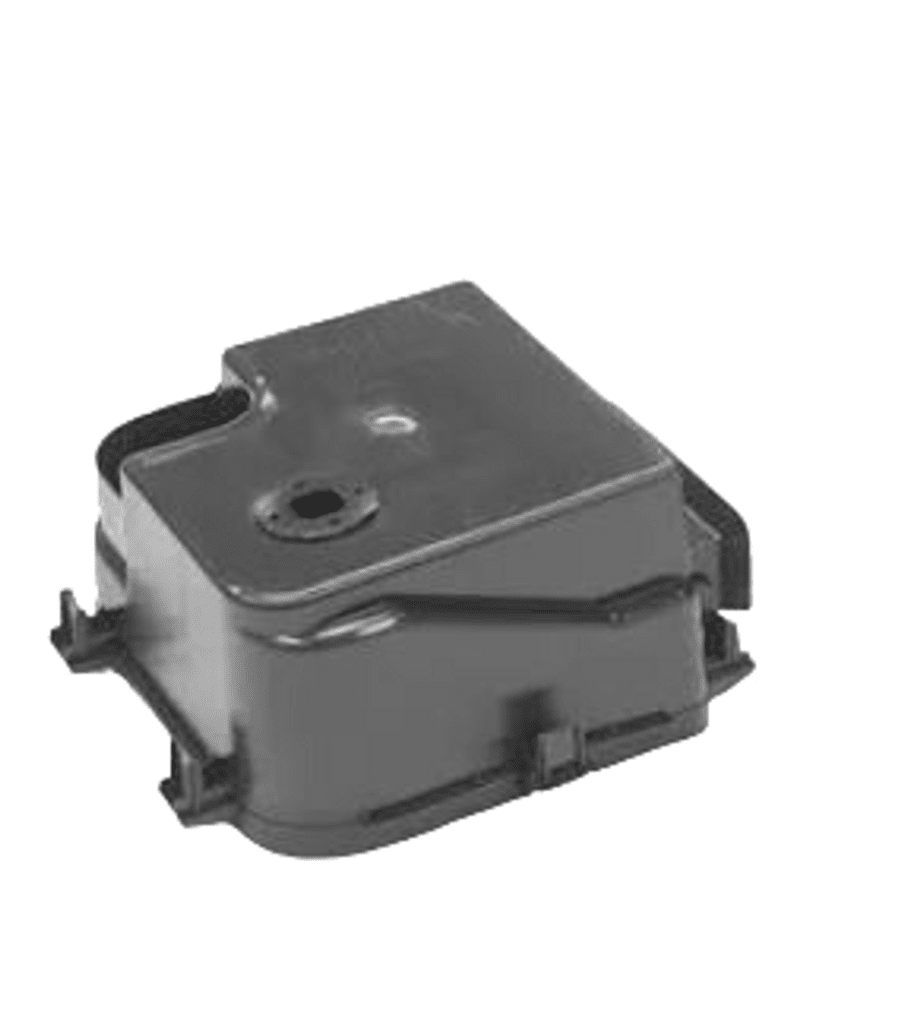
Custom electronic enclosure created with ABS injection welding
The modern-day reliance on electronic devices has created a significant demand for durable and aesthetically pleasing components. ABS injection molding emerges as a prime candidate for this role.
- Mobile Phone Housings: The sleek designs and robust nature of many phone cases owe their quality to ABS molding, ensuring protection and style.
- Television Frames: TVs require sturdy frames that can support the screen and house internal components. ABS, with its strength and smooth finish, is an ideal choice.
Household and Everyday Items
In our homes and daily lives, many items are results of ABS injection molding, often going unnoticed but playing essential roles. From mixer grinder bodies to the durable parts of a refrigerator, ABS proves its mettle by providing long-lasting components that can endure daily wear and tear.
Many children’s toys, especially those requiring structural integrity, are made from ABS. Its non-toxic nature and resistance to breakage make it suitable for this purpose.
Sports Equipment
The world of sports requires equipment that can withstand high stress and repeated use. ABS’s strength and resilience come into play here.
- Protective Gear: Helmets, guards, and other protective equipment often incorporate ABS to ensure athletes’ safety.
- Sporting Goods: Items such as rackets or bat handles, which need to endure forceful impacts, are enhanced with ABS components for longevity.
Potential Challenges in ABS Injection Molding
ABS injection molding, while an incredibly versatile and reliable process, isn’t without its challenges. As manufacturers aim to produce high-quality parts efficiently, they must be aware of potential issues that can arise and affect the final product. Addressing these challenges requires an in-depth understanding of the process, the material, and the design intricacies.
Let’s discuss the key potential challenges in ABS injection welding;
1. Warping
One of the most common issues in ABS injection molding is warping, where the final molded product distorts from its intended shape. This generally happens when different parts of the product cool at different rates, leading to internal stresses that deform the product.
Causes:
- Uneven cooling can result from poor mold design or improper cooling system setup.
- Excessive injection speeds or high mold temperatures.
2. Sink Marks
Sink marks are depressions or dimples that appear on the finished product’s surface. They usually occur when the surface cools faster than the inner sections, causing the internal material to contract and pull the surface inwards.
Causes:
- Thick sections in the design, which take longer to cool.
- Insufficient pressure during the holding phase.
3. Short Shots
Short shots happen when the molten ABS doesn’t fill the entire mold cavity, leading to incomplete parts.
Causes:
- Insufficient material fed into the machine.
- Blocked or restricted mold gates.
- Inadequate injection pressure or speed.
4. Burn Marks
These are discolorations, often dark or rust-colored, appearing on the surface of the molded part. They can result from trapped air getting heated to the point of burning or from the material itself degrading due to excessive heat.
Causes:
- Excessively high melt temperatures.
- Slow injection speeds, causing prolonged exposure to heat.
- Inadequate venting leads to trapped air.
5. Jetting
Jetting refers to a wavy pattern of lines that appears on the molded part’s surface. This occurs when the molten ABS doesn’t smoothly follow the mold’s contours, instead jetting through the mold in streams.
Causes:
- Misaligned or improperly designed gate locations.
- Too high injection speeds.
6. Delamination
Delamination is the appearance of flaky layers on the product’s surface. It indicates that the material hasn’t bonded correctly.
Causes:
- Contaminated material, often due to the presence of foreign particles or moisture.
- Incompatible materials are mixed in the mold.
7. Flash
Flash is the thin, unwanted excess material on the finished product’s edges. This usually results from material seeping into spaces between the mold’s parts.
Causes:
- Worn or damaged mold parts.
- Excessive injection pressure causes the material to force its way into unintended areas.
Table: Common Challenges, Causes, and Solutions in ABS Injection Molding
| Challenge | Primary Causes | Potential Solutions |
|---|---|---|
| Warping | Uneven cooling, Excessive injection speeds | Redesign mold for even cooling, Adjust injection settings |
| Sink Marks | Thick design sections, Insufficient holding pressure | Redesign for uniform thickness, Adjust holding pressure |
| Short Shots | Insufficient material, Blocked mold gates | Check material feed, Clean and maintain mold |
| Burn Marks | High melt temperatures, Trapped air | Adjust temperature settings, Improve venting |
| Jetting | Misaligned gates, High injection speeds | Redesign gate locations, Adjust injection speed |
| Delamination | Contaminated material, Mixed materials | Ensure material purity, Avoid mixing incompatible materials |
| Flash | Worn mold, High injection pressure | Repair or replace the mold, Adjust injection pressure |
Prolean’s Expert ABS Injection Molding Services
Prolean is at the forefront of the injection molding service industry, offering a comprehensive suite of services that emphasize precision, scalability, and innovation.
More Resource: ABS plastic machining
Our state-of-the-art facilities are equipped with the latest injection molding technology, ensuring that every part is molded to specifications with consistent quality. Additionally, we offer a consultative approach, working closely with clients to optimize design for manufacturability, streamline production, and minimize costs without compromising the quality.
- Material Expertise: In-depth knowledge of ABS properties to guide material selection and optimization.
- Design Optimization: Assistance in refining part designs for improved performance and cost-efficiency.
- Advanced Facility: Equipped with the latest injection molding machines and automation technology for efficient production.
- Precision Engineering: Utilizing advanced CAD and simulation tools to ensure high precision in mold design and part production.
- Scalable Solutions: Offering scalable production capabilities, from prototyping to high-volume manufacturing runs.
- Innovative Techniques: Implementing cutting-edge techniques like gas-assisted injection molding for complex parts.
- Quality Assurance: Rigorous quality control measures are in place to ensure each part meets stringent standards.
- Cost-Effective Production: Strategically reducing production costs through intelligent design and process optimization.
- Customer-centric service: Tailored support and collaboration throughout the development and manufacturing process.
Read more:
- Injection Molding Gate: Expert Insights on Design & Manufacturing
- ABS CNC Machining: Everything You Need to Know
- ABS Machining: A Detailed Guide
Conclusion
ABS injection molding is vast, encompassing intricate processes, diverse applications, and the potential to overcome various challenges. As with any manufacturing technique, its efficiency and output quality depend on the precise balance of material properties, machine settings, mold design, and operator expertise. Given its favorable properties, ABS remains a top choice for numerous industries, from automotive to consumer electronics. While the process has its challenges, they are surmountable with the right knowledge and approach. Continuous research, technological advancements, and training will only enhance the capabilities of the ABS injection molding process, paving the way for future innovative and high-quality products.
FAQs
Why is ABS a popular choice for injection molding?
ABS combines the strength of acrylonitrile, the toughness of butadiene, and the ease of processing of styrene, making it a favored material for various applications due to its balanced properties.
How does ABS compare to other thermoplastics in molding?
ABS boasts greater toughness, superior resistance to high temperatures, and better surface finishing capabilities compared to other thermoplastics.
Can ABS injection molding be used for high-precision parts?
Absolutely, ABS injection molding is renowned for producing high-precision parts with consistent quality and dimensional stability.
What factors affect the cost of ABS injection molding projects?
Key factors include material costs, mold design complexity, production volume, and labor.
Does the color of ABS affect the molding process?
Coloring agents or masterbatches can be added to ABS to achieve desired colors. While the fundamental molding process remains the same, the presence of colorants may require slight adjustments in processing temperatures or times to ensure consistent color and properties.
Is ABS injection molding suitable for high-volume production?
Absolutely. ABS injection molding is highly scalable and is often used for mass production due to its fast cycle times and the ability to produce complex parts with consistent quality.
What are the common defects in ABS injection molding?
Common defects include warping, sink marks, short shots, burn marks, jetting, delamination, and flash. Each of these defects has its own set of causes and solutions.
How can I minimize defects in the ABS injection molding process?
To minimize defects in the ABS injection molding process, ensure that the mold design is optimal, maintain consistent machine settings, use high-quality materials, and regularly inspect and clean the mold. By following these steps, the occurrence of defects can be significantly reduced.
How does Prolean ensure quality in its ABS injection molding services?
Prolean ensures quality through advanced technology, rigorous quality control, and expertly designed molding processes.
References
- Fetecau, C., & Dobrea, D. (2010). Overmolding injection molding simulation of tensile test specimen. Retrieved from https://www.semanticscholar.org/paper/OVERMOLDING-INJECTION-MOLDING-SIMULATION-OF-TENSILE-Fetecau-Dobrea/5bf00bbcc20212bead3f5e858907a8e3a999fbf1



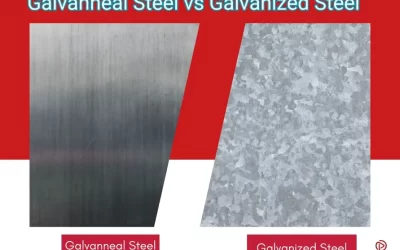
Ich finde das Verfahren auch echt Klasse. Deshalb will ich mir auch Spritzgusswerkzeug herstellen lassen. Die Arbeit mit ABS scheint auch sehr effektiv zu sein.
Very needful information
It was nice to know that article was helpful for you!
As a designer, I just want to appreciate how well organized information’s are for ABS Injection Molding?
As a designer, I just want to appreciate how well organized information’s are for ABS Injection Molding?
Thank you Emma for your kind words. Keep checking our blogs on injection moldings